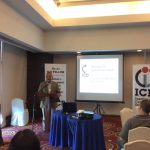In today’s dynamic business landscape, traditional performance review metrics can sometimes fall short of capturing an employee’s holistic contribution and aligning individual aspirations with organizational goals. Enter OKRs (Objectives and Key Results) – a goal-setting framework that is gaining traction among leading companies worldwide. Through OKRs, organizations can set clear, measurable targets that resonate with both company vision and individual potential.

Origins and Principles of OKRs
The OKR methodology, which stands for Objectives and Key Results, has its origins in the halls of Intel, under the insightful leadership of Andy Grove. This approach was not merely a performance metric; it was envisioned as a holistic strategy to align individual goals with the broader vision of the organization.
Its effectiveness caught the attention of other industry giants, notably Google. The tech behemoth adopted OKRs and has, on multiple occasions, attributed a considerable part of its meteoric rise and sustained success to this rigorous yet adaptable framework. The elegance of the OKR method lies in its simplicity. Objectives provide a clear vision of what one hopes to accomplish — they are ambitious, setting the direction. In contrast, Key Results act as tangible metrics, laying down the path to gauge how close or far one is from reaching those objectives.
A distinguishing characteristic of the OKR methodology is its emphasis on aspirational goals. Rather than setting easily achievable targets, OKRs encourage setting lofty objectives. The rationale behind this is to push teams and individuals beyond the confines of their usual boundaries. While not all OKRs may be fully realized, aiming high invariably results in greater achievements than settling for the easily attainable. In essence, the OKR framework not only directs organizational energy but also amplifies it, fostering a culture of continuous growth and innovation.
Crafting OKRs that Align with Company Vision and Individual Capabilities
Creating effective OKRs is a fine balance between strategy, vision, and practicality, with OKR certification enhancing this alignment. One essential aspect of this process is ensuring that these objectives align seamlessly with the overarching company vision. This alignment ensures that every individual, irrespective of their role, directs their efforts towards the same organizational purpose, contributing collectively.
Nonetheless, while alignment with the company’s vision is pivotal, the essence of OKRs lies in their adaptability to individual roles and capabilities. Each OKR should strike a balance between ambition and realism. By setting objectives that stretch capabilities without overwhelming them, organizations can foster growth while maintaining employee morale.
An often underestimated element of the OKR framework is involving employees in the goal-setting process. Imposing objectives from the top down can sometimes lead to disengagement or a sense of disconnection from the broader vision. Conversely, engaging individuals in crafting their OKRs can nurture a sense of ownership and commitment. When employees feel their input matters and that they’ve played a role in shaping their objectives, they not only understand the ‘what’ and the ‘how’ but also deeply connect with the ‘why’ behind their goals.
In conclusion, while OKR goal setting is a strategic process, it is fundamentally centered on people. It’s about harnessing an organization’s collective strength while acknowledging and nurturing individual abilities and aspirations.
Evaluating OKRs during Performance Reviews
The OKR methodology brings a refreshing nuance to performance evaluations by moving away from the black-and-white nature of traditional metrics and introducing a spectrum of success. Instead of a mere pass or fail, OKRs recognize the journey towards the goal, appreciating the milestones achieved along the way.
During performance reviews, this nuanced approach offers a multifaceted perspective on progress. With OKRs as a benchmark, evaluators can measure not just the end result but also the trajectory of growth. Given the inherent ambition in OKRs, they are not always expected to be fully met. As a result, coming close to achieving a Key Result is often seen as a significant accomplishment in itself.
However, the true power of OKRs in performance reviews lies beyond mere measurement. Any gaps between the set Key Results and actual achievements serve as valuable learning opportunities. Instead of labeling them as shortcomings, these gaps can be dissected to uncover underlying challenges, barriers, or areas in need of skill development.
In essence, while traditional metrics might categorize anything short of 100% achievement as a failure, the OKR philosophy understands that aiming high and achieving 70% can often be more innovative and growth-inducing than setting a low bar and consistently achieving 100%. The emphasis shifts from mere outcomes to the journey, the learnings, and the iterative process of continuous improvement.
Adjusting OKRs in Response to Review Feedback
The OKR methodology, which hinges on its inherent adaptability, offers organizations a dynamic tool that evolves with changing circumstances and insights. Instead of being static markers, OKRs function as living entities that thrive on continuous reflection and adjustment.
Following performance evaluations, it’s imperative for organizations and individuals to engage in introspection, particularly concerning key performance indicators for employees. This self-examination revolves around understanding the successes and challenges experienced in the pursuit of previously set OKRs linked to these KPIs. Did certain Key Results prove too ambitious in relation to the established KPIs? Were some objectives achieved with surprising ease? Such questions provide valuable insights into employee performance.
The feedback obtained during these reviews becomes the catalyst for recalibration, especially in terms of KPIs. Key Results may need to be refined to better measure progress, especially with regard to these performance indicators. In some cases, the objectives themselves may undergo transformation, reflecting shifts in company strategy or market dynamics that impact KPIs. At times, entirely new OKRs may emerge, spotlighting previously overlooked areas of potential growth and new key performance indicators for employees.
This cyclical nature of setting, evaluating, and adjusting OKRs ensures they remain closely tied to key performance indicators for employees. Instead of stagnating, they continuously evolve, mirroring the growth and aspirations of both the individuals and the organization. This iterative approach guarantees that OKRs consistently serve as relevant touchpoints for employee performance, steering teams toward excellence while accommodating the ever-changing landscape of business and personal development tied to these KPIs.
Conclusion
OKR goal-setting is more than just another corporate buzzword. It’s a transformative approach to performance reviews and goal setting, putting clarity, alignment, and ambition at its core. As companies and individuals navigate the complexities of the modern workplace, OKRs offer a beacon, guiding both toward sustained growth and success.











